About Bonding
"Bonding" involves electrically connecting the various metal components that enclose conductors or equipment that may accidentally become energized.
Components that are commonly bonded are:
- Electrical service masts;
- Electric meter housings;
- Load center cabinets;
- Metal conduit/raceways;
- Water supply pipes; and
- Gas pipes(may vary by jurisdiction)
Bonding INSIDE the service panel
Main bonding jumpers. Grounding and neutral bus bars should be bonded together (only service panels, not in sub-panels);
Methods that bond the neutral and grounding bus bars by connecting them to the back wall of the metal cabinet:

Bonding straps may look like this or may be flexible. The use the back of the metal cabinet to electrically connect the grounding and neutral bus bars. Both bus bars must be mounted in direct contact with the metal cabinet for this method to be effective.
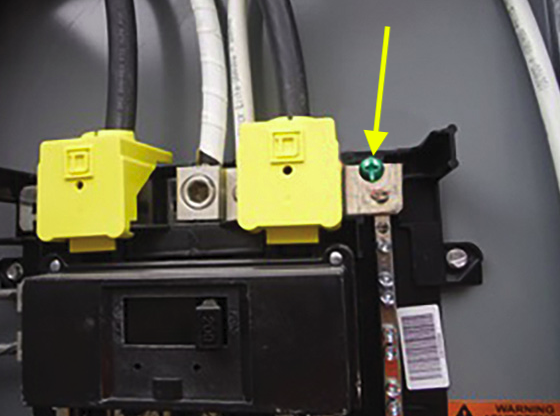
Bonding screws (green) also contact the back of the metal cabinet, working in a manner similar to a bonding strap.
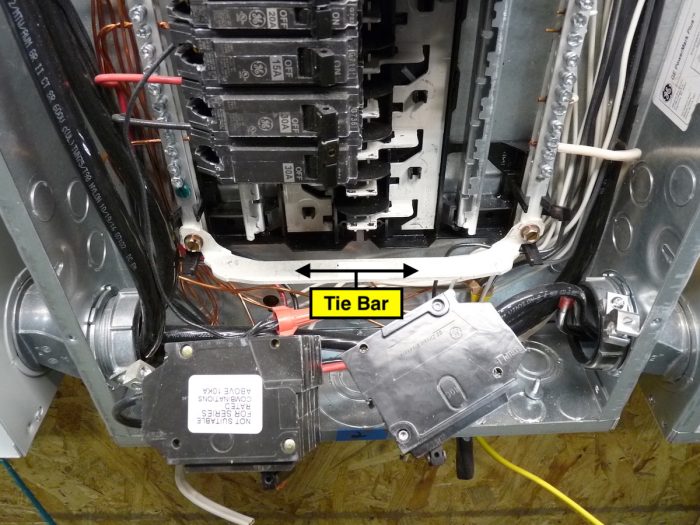
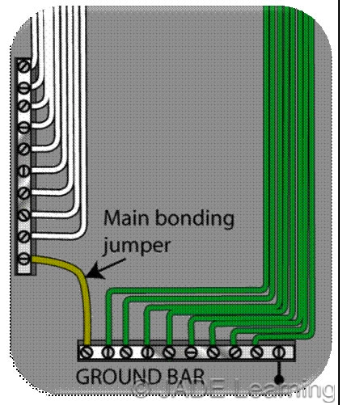
Tie bars may directly connect the two bus bars. A conductor may also be used, no smaller than the grounding electrode conductor (GEC).
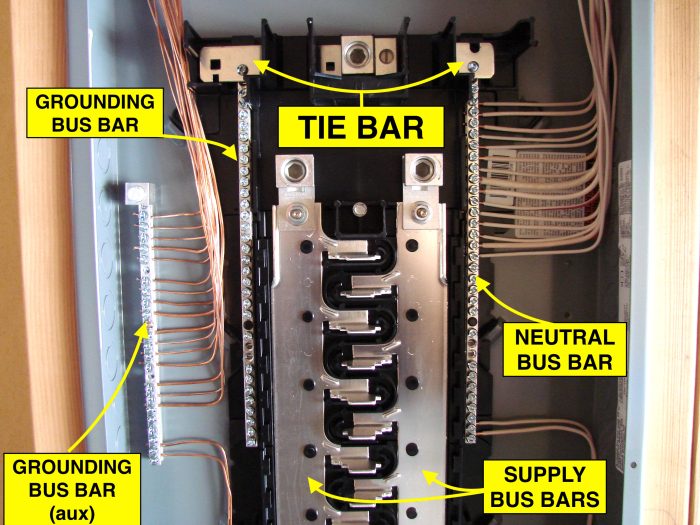
INEFFECTIVE BONDING JUMPER (TIE BAR)
This tie bar will be located behind the main disconnect once the disconnect is installed. The tie bar will be ineffective as a bonding jumper because the electrician used the auxiliary grounding bus bar. To bond the two bus bars together, this panel will need a bonding strap, or to have the equipment grounding conductors (bare copper) moved to the main grounding bus bar.
Bonding Bushings
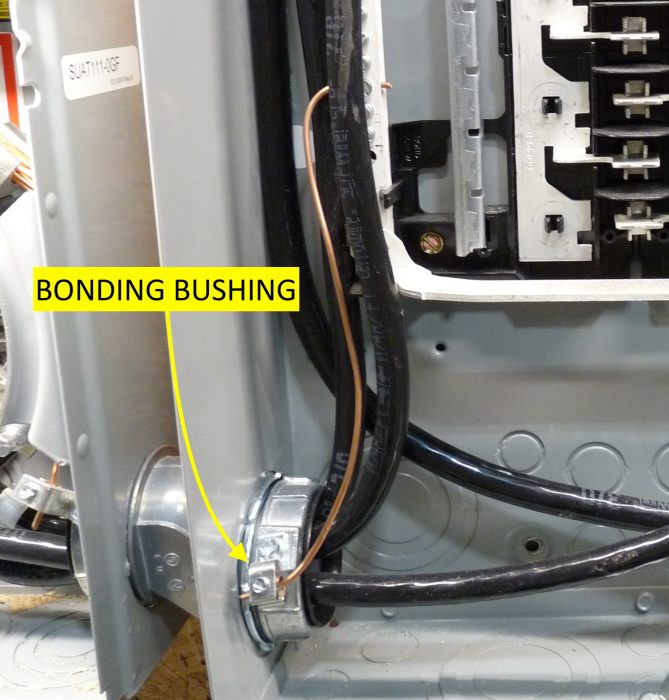
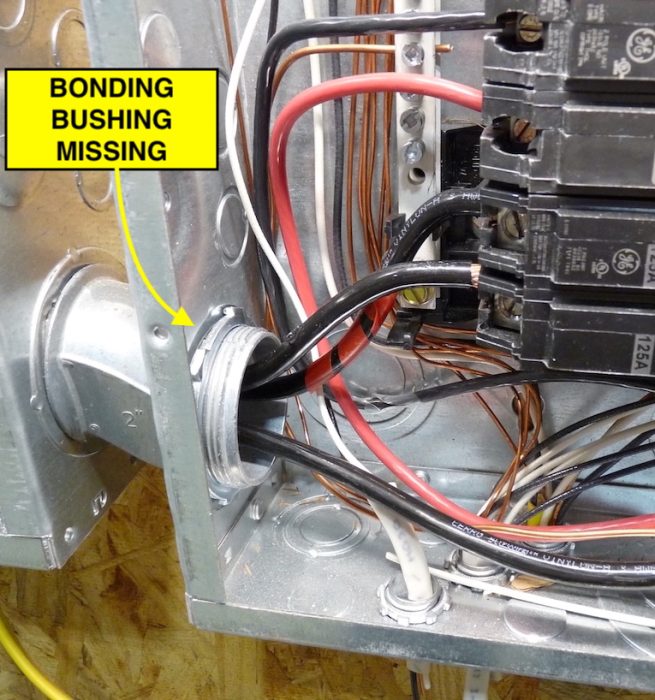
Left: bonding bushing installed Right:bonding bushing missing
Where a metal raceway connects to a panel through a concentric knockout, a bonding bushing must be used to reliably bond the raceway to the neutral bus bar.
OK:
- Conductors (adequate size);
- Threaded couplings and hubs;
- Threadless (compression) connectors;
- Bonding locknuts, bushings and wedges. (will have screw);
Not OK
- Standard locknuts
Bonding OUTSIDE the service panel.
Any metal components that contain current-carrying conductors should be bonded both to each other, and to the grounded (neutral) service conductor. Some jurisdictions may not allow bonding of gas pipes.
Components commonly bonded are:
- Electrical mast;
- Meter housing;
- Metal conduit; and
- Any metal raceways grounded (neutral) service conductor.
Components that may accidentally become energized should be bonded to the rest of the electrical system:
- Metal water and gas pipes. Look for bonding at water heaters, and at points where pipes pass near the service panel or a sub-panel.
NOTE: In sub-panels, neutral bus bars must float, i.e., must not be bonded to the cabinet or grounding bus bar. Check to see that green-colored bonding screws have been removed or that other methods have been used to ensure electrical isolation of the neutral conductor.
Bonding in Sub-Panels
- Floating neutral bus bar. Neutral bus bar must not be bonded to the cabinet or grounding bus bar.
- No fused neutrals.
